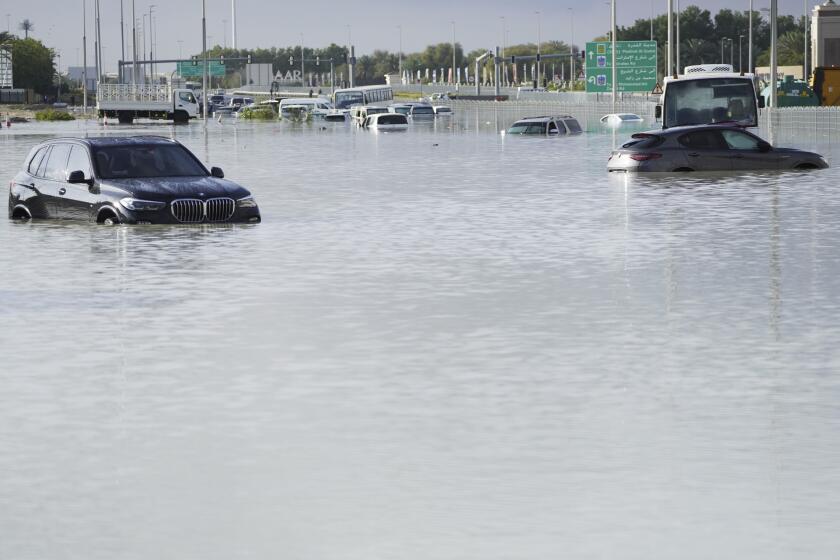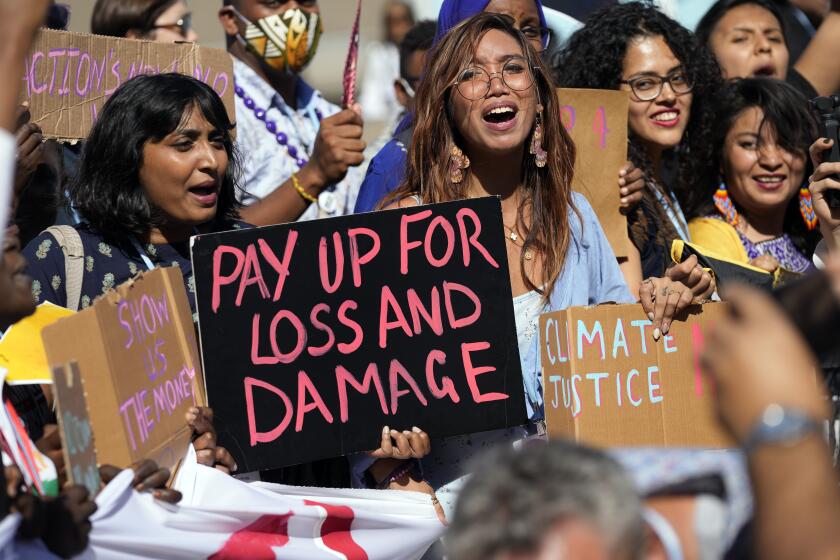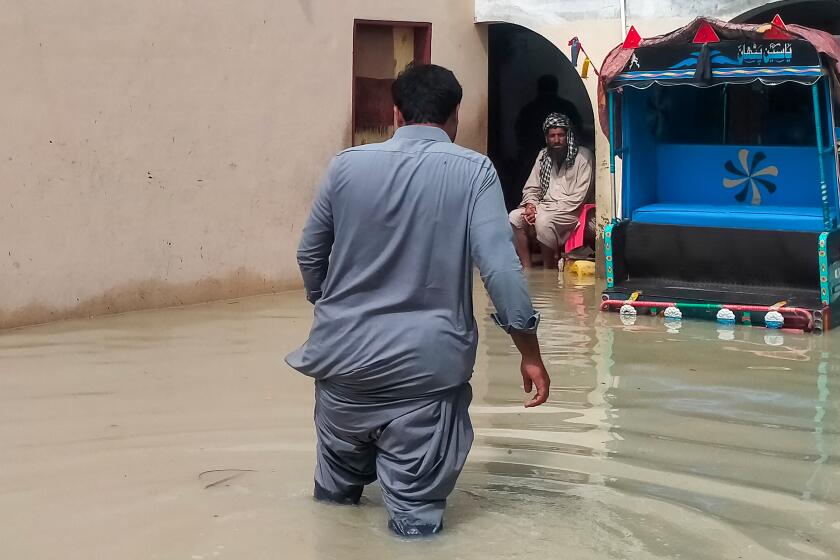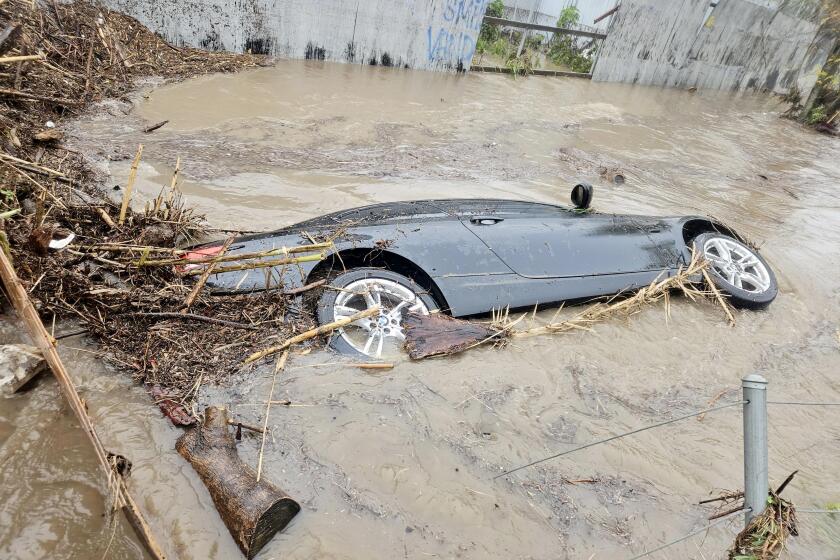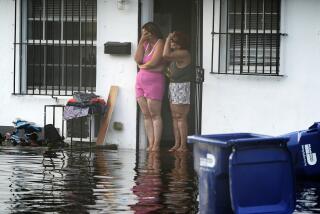United Arab Emirates struggles to recover after heaviest recorded rainfall hits desert nation
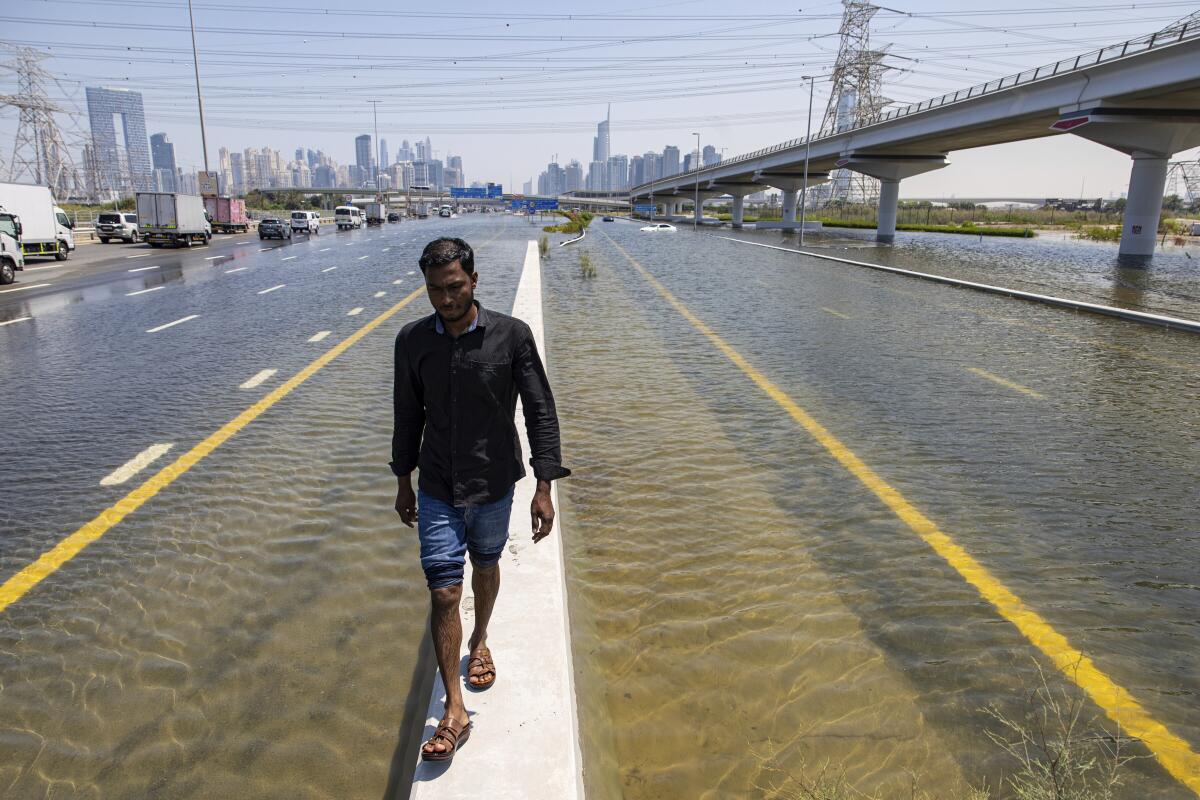
DUBAI — The United Arab Emirates tried to wring itself out Thursday after the heaviest recorded rainfall ever to hit the desert nation, with its main airport allowing more flights even as floodwater still covered portions of major highways and communities.
Dubai International Airport, the world’s busiest for international travel, allowed global carriers on Thursday morning to again fly into Terminal 1 at the airfield. And long-haul carrier Emirates, crucial to East-West travel, began allowing local passengers to arrive at Terminal 3, their base of operations.
However, Dubai Airports CEO Paul Griffiths said in an interview with the Associated Press that the airfield needed at least an additional 24 hours to resume operations close to its usual schedule. Meanwhile, one desert community in Dubai saw floodwaters continue to rise Thursday to as much as 3 feet as civil defense officials struggled to pump out the water.
“We were looking at the radar thinking, ‘Goodness, if this hits, then it’s going to be cataclysmic,’” Griffiths said of the storm. “And indeed it was.”
The airport ended up needing 22 tankers with vacuum pumps to get water off its grounds. Griffiths acknowledged that taxiways flooded during the rains, though the airport’s runways remained free of water to safely operate. Online videos of a FlyDubai flight landing with its reverse thrust spraying out water caught the world’s attention.
Heavy thunderstorms have lashed the United Arab Emirates, dumping the heaviest rain ever recorded in the country in just hours.
“It looks dramatic, but it actually isn’t that dramatic,” Griffiths said.
Emirates, whose operations had been struggling since the storm Tuesday, had stopped travelers flying out of the UAE from checking into their flights as they tried to move out connecting passengers. Pilots and flight crews also had a hard time reaching the airport given the water on roadways.
But on Thursday, Emirates lifted that order to allow customers into the airport. Some 2,000 people came into Terminal 3, again sparking long lines, Griffiths said.
Others who arrived at the airport described hours-long waits to get their baggage, with some just giving up to head home or to whatever hotel would have them.
The UAE, a hereditarily ruled, autocratic nation on the Arabian Peninsula, typically sees little rainfall in its arid desert climate. However, a massive storm forecasters had been warning about for days blew through the country’s seven sheikhdoms.
By the end of Tuesday, more than 5.59 inches of rainfall had soaked Dubai over 24 hours. An average year brings 3.73 inches of rain to Dubai International Airport. Other areas of the country had even more precipitation.
Nearly all the world’s nations finalized the creation of a fund to help compensate countries struggling with loss and damage from climate change.
Meanwhile, intense floods also have struck neighboring Oman in recent days. Authorities on Thursday raised the death toll from those storms to at least 21 killed.
The UAE’s drainage systems quickly became overwhelmed Tuesday, flooding out neighborhoods, business districts and even portions of the 12-lane Sheikh Zayed Road highway running through Dubai.
The state-run WAM news agency called the rain “a historic weather event” that surpassed “anything documented since the start of data collection in 1949.”
In a message to the nation late Wednesday, Emirati leader Sheikh Mohammed bin Zayed Al Nahyan, the ruler of Abu Dhabi, said authorities would “quickly work on studying the condition of infrastructure throughout the UAE and to limit the damage caused.”
On Thursday, people waded through oil-slicked floodwater to reach cars earlier abandoned, checking to see if their engines still ran. Tanker trucks with vacuums began reaching some areas outside of Dubai’s downtown core for the first time as well. Schools remain closed until next week.
Authorities have offered no overall damage or injury information from the floods, which killed at least one person.
At least 29 have died due to heavy rains across Pakistan, which have caused houses to collapse and landslides to block roads, authorities say.
However, at least one community saw the effects of the rainfall get only worse Thursday. Mudon, a development by the state-owned Dubai Properties, saw flooding in one neighborhood reach as much as about 3 feet. Civil defense workers tried to pump the water out, but it was a struggle as people waded through the floodwater.
Residents of Mudon, who spoke to the AP on condition of anonymity given the UAE’s strict laws governing speech, described putting together the equivalent of nearly $2,000 to get a tanker to the community Wednesday. They alleged the developers did nothing to help before that, even as they called and emailed. They also said a nearby sewage processing facility failed, bringing more water into their homes.
“A lot of people were in denial of how bad it was,” one homeowner said as civil defense officials waded through the water, bringing bottled water on a raft.
Dubai Holding, a state-owned company that has Dubai Properties as an arm, did not respond to questions. It’s part of a wider nexus that U.S. diplomats have called “Dubai Inc.” — all properties overseen by the city-state’s ruling family.
Hundreds of San Diego homes and businesses were damaged or ruined in devastating floods after punishing rainfall fell Monday during a ‘thousand-year storm.’
The flooding sparked speculation that the UAE’s aggressive campaign of cloud seeding — flying small planes through clouds dispersing chemicals aimed at getting rain to fall — may have contributed to the deluge. But experts said the storm systems that produced the rain were forecast well in advance and that cloud seeding alone would not have caused such flooding.
Scientists also say climate change is responsible for more intense and more frequent extreme storms, droughts, floods and wildfires around the world. Dubai hosted the United Nations’ COP28 climate talks just last year.
Abu Dhabi’s state-linked newspaper the National in an editorial Thursday described the heavy rains as a warning to countries in the wider Persian Gulf region to “climate-proof their futures.”
“The scale of this task is more daunting than it appears even at first glance, because such changes involve changing the urban environment of a region that for as long as it has been inhabited, has experienced little but heat and sand,” the newspaper said.
Gambrell writes for the Associated Press.
More to Read
Sign up for Essential California
The most important California stories and recommendations in your inbox every morning.
You may occasionally receive promotional content from the Los Angeles Times.
